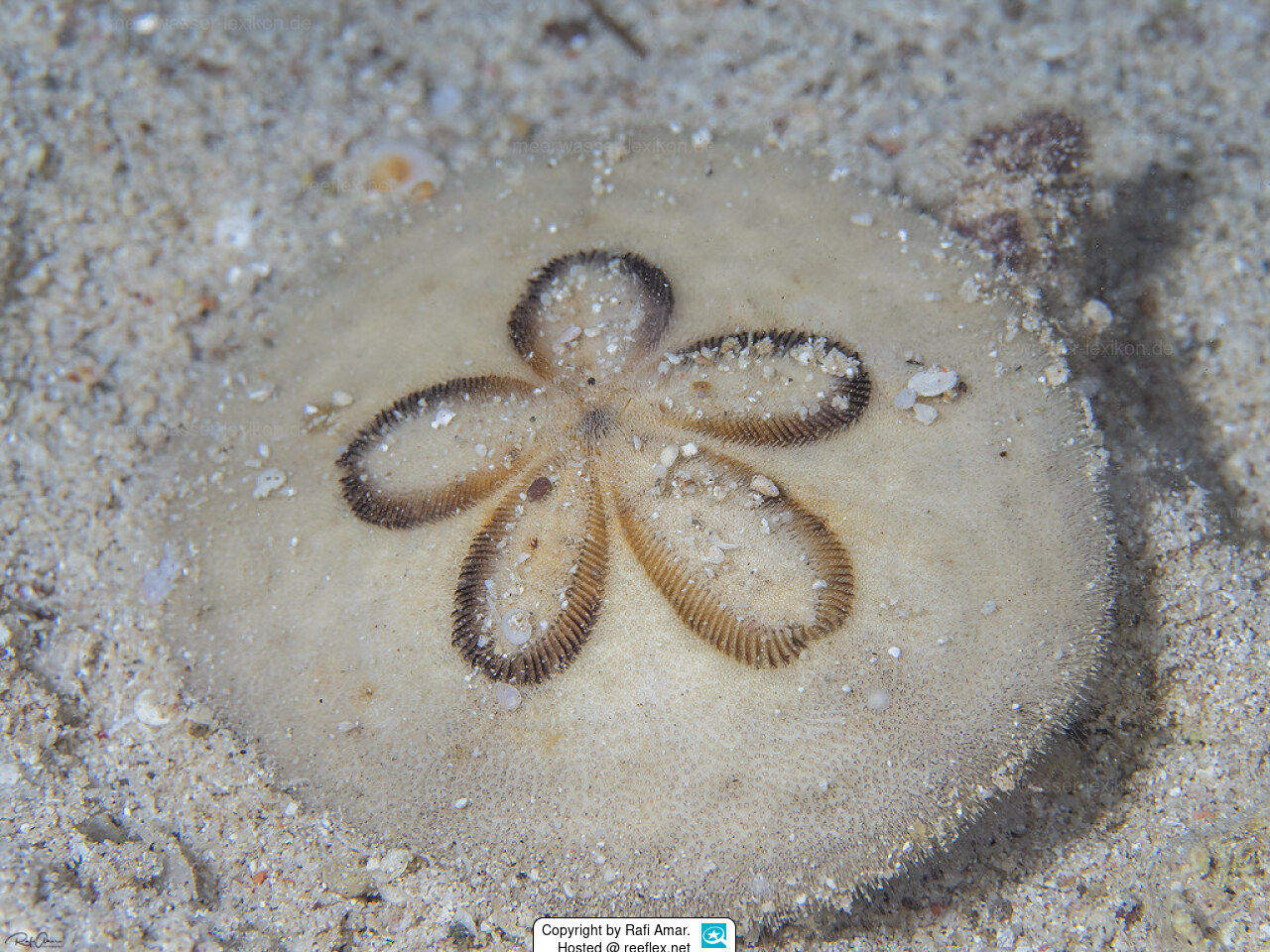Info
Clypeaster humilis (Leske, 1778)
Clypeaster humilis is a species of sea urchin in the Family Clypeasteridae. This species was first scientifically described in 1778 by the German biologist Nathanael Gottfried Leske. It occurs in the tropical Indo-Pacific region.
Commonly known as Sea biscuit.
Synonymised names:
Clypeaster (Stolonoclypus) humilis (Leske, 1778) (subgeneric subdivision of Clypeaster not accepted by scientific community)
Clypeaster ambigenus (Lamarck, 1816) (subjective junior synonym)
Clypeaster latus Herklots, 1854 (subjective junior synonym)
Clypeaster placunarius (Lamarck, 1816) (subjective junior synonym)
Clypeaster rumphii Des Moulins, 1837 (subjective junior synonym)
Clypeaster saisseti Michelin, 1861 (subjective junior synonym)
Clypeaster tumescens Herklots, 1854 (subjective junior synonym)
Echinanthus explanatus Gray, 1851 (subjective junior synonym)
Echinanthus humilis Leske, 1778 (transferred to Clypeaster)
Echinanthus placunarius (Lamarck, 1816) (subjective junior synonym)
Echinanthus productus Gray, 1851 (subjective junior synonym)
Echinodiscus placunarius (Lamarck, 1816) (subjective junior synonym)
Scutella ambigena Lamarck, 1816 (subjective junior synonym)
Scutella placunaria Lamarck, 1816 (subjective junior synonym)
Stolonoclypus humilis (Leske, 1778) (transferred to Clypeaster)
Clypeaster humilis is a species of sea urchin in the Family Clypeasteridae. This species was first scientifically described in 1778 by the German biologist Nathanael Gottfried Leske. It occurs in the tropical Indo-Pacific region.
Commonly known as Sea biscuit.
Synonymised names:
Clypeaster (Stolonoclypus) humilis (Leske, 1778) (subgeneric subdivision of Clypeaster not accepted by scientific community)
Clypeaster ambigenus (Lamarck, 1816) (subjective junior synonym)
Clypeaster latus Herklots, 1854 (subjective junior synonym)
Clypeaster placunarius (Lamarck, 1816) (subjective junior synonym)
Clypeaster rumphii Des Moulins, 1837 (subjective junior synonym)
Clypeaster saisseti Michelin, 1861 (subjective junior synonym)
Clypeaster tumescens Herklots, 1854 (subjective junior synonym)
Echinanthus explanatus Gray, 1851 (subjective junior synonym)
Echinanthus humilis Leske, 1778 (transferred to Clypeaster)
Echinanthus placunarius (Lamarck, 1816) (subjective junior synonym)
Echinanthus productus Gray, 1851 (subjective junior synonym)
Echinodiscus placunarius (Lamarck, 1816) (subjective junior synonym)
Scutella ambigena Lamarck, 1816 (subjective junior synonym)
Scutella placunaria Lamarck, 1816 (subjective junior synonym)
Stolonoclypus humilis (Leske, 1778) (transferred to Clypeaster)







 Rafi Amar, Israel
Rafi Amar, Israel







